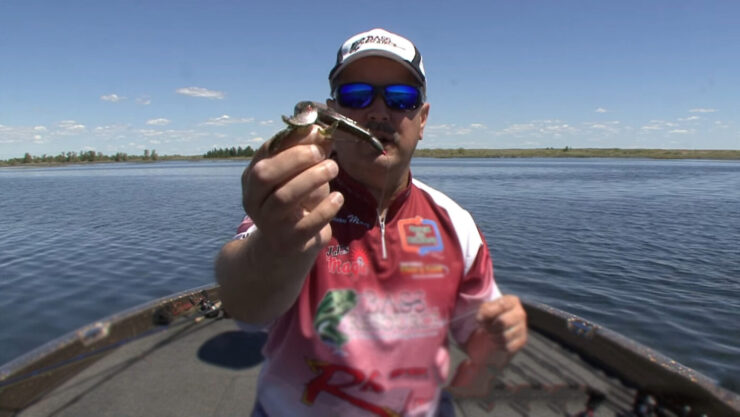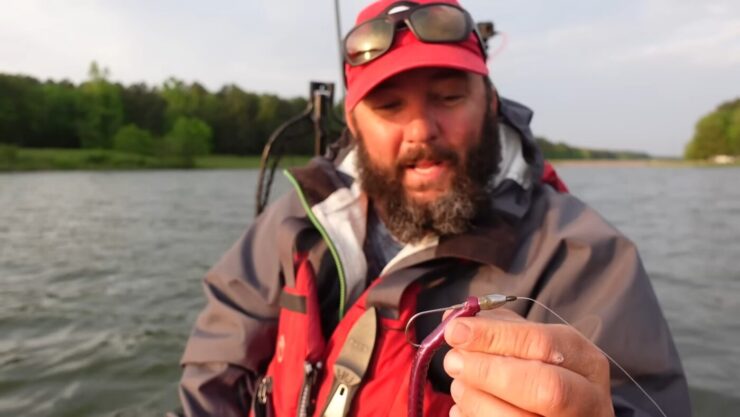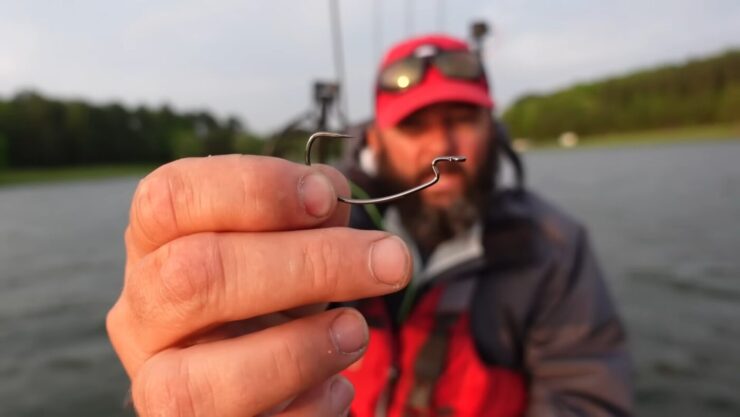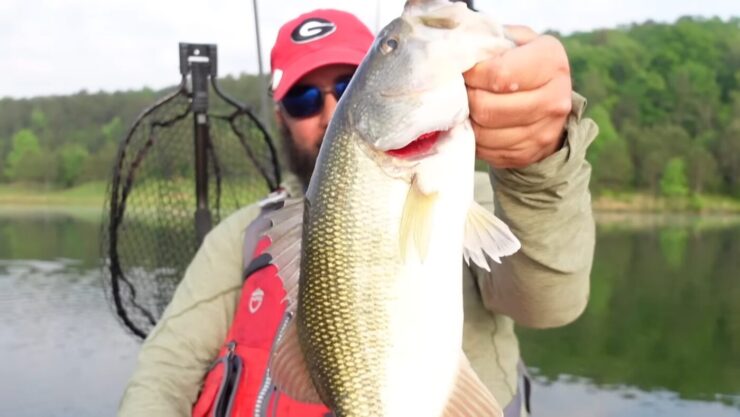Over the years, I came across a lot of techniques. Yet, the Texas Rig, widely recognized as the Lone Star Technique, has consistently stood out. I became increasingly fascinated by the origins and intricacies of this method, rooted in the heart of Texas and cherished by anglers across the globe.
Now, I am determined to share my knowledge, presenting a thorough exploration of this esteemed technique. Whether you’re a budding angler keen on broadening your horizons or a seasoned enthusiast aiming to hone your craft, I invite you to join me in uncovering the wonders of the Texas Rig.
Table of Contents
ToggleHistory and Evolution
The inception of this technique can be traced back to the mid-20th century. Anglers were seeking a solution to fish soft plastics without constantly getting snagged. The solution? Embedding the hook point inside the bait gave birth to what we now know as the Texas Rig Technique.
Over the years, subtle refinements have transformed the initial rudimentary designs into the efficient system used today.
Essential Tools for Implementation
Before diving into the water, one needs the right tools. The fundamental components include soft plastic lures, hooks, and weights. The market offers a wide variety of each component, which can be tailored to specific fishing conditions and personal preferences.
Setting Up the System
Ensuring your setup is optimized is paramount. A properly rigged system increases the chances of a catch and minimizes potential issues.

Selecting the Perfect Hook
A plethora of hooks are available, each with its unique design and purpose. Depending on the type of bait and targeted species, the hook’s shape and size can vary. Remember, the aim is to ensure the bait’s natural movement isn’t hindered while maximizing hook-up ratios.
Appropriate Weights and Their Importance
Weights play a pivotal role. They not only control the depth but also influence the bait’s action. Depending on water conditions and the desired action, an angler can choose from bullet weights, coin weights, or no weight at all.
While heavier weights are ideal for deeper waters, lighter or weightless setups might be preferred for shallower areas or when targeting suspended fish.
Lure Selection and Presentation
Using the right lure and presenting it accurately can make all the difference.
| Lure Type | Ideal Conditions | Notes |
|---|---|---|
| Soft Plastic Worm | Warm waters | Choice of lure depends on fish behavior and prevailing conditions. |
| Crawfish Imitation | Rocky terrains | Matching the hatch is key to success. |
At the same time, presentation matters. From the retrieve speed to the action imparted, nuances can significantly affect success rates. Subtle twitches, pauses, or even a steady retrieve can trigger bites. Being versatile and adapting to what the fish want on a particular day is vital.

Advancing Your Technique
Even seasoned anglers can benefit from refining their approach and staying updated with the latest insights.
Addressing Common Challenges
Every technique has its learning curve, and the Texas Rig is no exception. Issues like bait tearing or missing bites can be frustrating. Addressing these challenges often involves slight modifications, such as changing hook sizes or adjusting the rigging method.
Environment and Seasonality Factors
Nature plays a big role. Understanding and adapting to the environment ensures consistent success.
Different Water Conditions
Clarity, temperature, and current are factors that influence fish behavior.
- Murky waters:
- Often demand brighter colored lures.
- Typically require aggressive presentations.
- Clearer waters:
- Usually need a more subtle approach.
- Favor natural-colored baits.
- Temperature fluctuations directly affect fish activity levels.
- Cold water:
- Necessitates a slower presentation.
- Warmer waters.
- Allow for a more aggressive approach.
Time of Year and Its Effects
Fish behavior changes with the seasons. Spring might see them in shallow waters for spawning, while summer might push them to deeper, cooler zones. Understanding these seasonal movements is crucial for success. Certain lures might work better in specific seasons.
For instance, creature baits might be more effective during the spawn, while worms can be a go-to during the summer months.
Safety and Conservation Measures
As stewards of nature, anglers bear a responsibility to protect and preserve our water bodies and fish populations.
Responsible Angling
Practicing catch and release, using barbless hooks, and handling fish with care are just a few ways to ensure their survival post-catch. Being mindful of the environment – like not discarding trash or fishing line – goes a long way in preserving the natural habitat.
Ensuring Sustainability for Future Generations
Limiting catches, following size and bag limits, and respecting closed seasons are crucial for the sustainability of fish populations. Overfishing not only affects the species but the entire ecosystem. By being conscious and making informed decisions, anglers can ensure that future generations also enjoy the joys of fishing.
Comparisons and Alternatives

While the Lone Star Technique is versatile, understanding its alternatives can enhance an angler’s arsenal.
Distinguishing from Other Techniques
The Texas Rig stands out due to its snag-free design and adaptability. Techniques like the Carolina or drop shot rig also have their unique advantages. Knowing when to use which technique can be game-changing. For example, while the Lone Star might be ideal for weed-infested areas, a drop shot rig might excel in vertical presentations in deeper waters.
Considering When to Use Alternate Methods
Every fishing situation is unique.
- Factors to consider include:
- Water depth
- Vegetation
- Fish mood
- Other environmental and behavioral aspects
- Flexibility in approach is crucial:
- Avoid being fixated on a single technique.
- An adaptable angler typically achieves greater success.
FAQs
Is the Lone Star Technique suitable for saltwater fishing?
Yes, it can be adapted for saltwater conditions. It’s crucial to ensure the materials used are corrosion-resistant.
Can I use the method for species other than bass?
Absolutely. While initially designed for bass, it’s versatile enough for various species, including walleye, pike, and even some saltwater species.
Why is it Often Addressed the “Lone Star Technique”?
The name is a nod to Texas, where the method was popularized. To provide a fresh perspective and avoid repetition, it’s also referred to as the “Lone Star Technique.”
Are there conservation concerns related to using this technique?
Like any fishing method, it’s essential to practice responsible angling. This includes practicing catch and release, using barbless hooks, and being aware of size and bag limits.
Can I combine the Lone Star Technique with other fishing techniques?
Yes, the Lone Star Technique is adaptable and can be combined with various fishing strategies, such as using scents or adjusting retrieve techniques.
How do I master the Lone Star Technique?
Practice and observation are crucial. Experiment with different setups, lures, and retrieval methods to see what works best in various conditions. Also, consider learning from seasoned anglers or attending workshops to gain more insights.
The Bottom Line
it’s evident that the Texas Rig is more than just a fishing method. Rooted in the heart of Texas and now adopted globally, this technique offers versatility that few others can match. It comes with a string of both challenges and rewards, ensuring every fishing trip is a prepared unique experience. We do not doubt you will enjoy using it.
Related Posts:
- 16 Best Kayak For Beginners 2024 - Kayaking Adventure Gear
- Heavy Duty Fishing: 11 Best Rods And Reels For Big Fish 2024
- 12 Best Beach Wagons & Carts 2024 - For All-Terrain
- 10 Best Fish Finders Under $200 2024 - Top Affordable Picks
- 10 Best Kayaks For Camping 2024 - Lightweight and…
- 10 Best Inflatable Kayak 2024 - Rivers, Lakes & Open Seas












